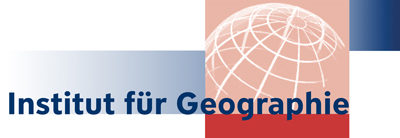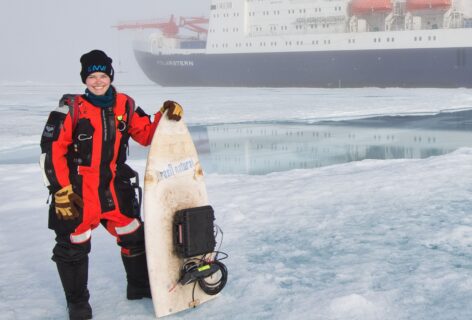Doctoral defense of Katrina Lutz (AG GIS) – 02.06.2025
Katrina Lutz (AG GIS)
Topic: Supraglacial lake monitoring using remote sensing methods in Northeast Greenland
When: June 2nd, 2025 at 13:00
Where: SR 00.175, Wetterkreuz 15, Erlangen
Please join us for the doctoral defense of Katrina Lutz where she will give an overview of her research on supraglacial lakes that she has conducted under the supervision of Prof. Dr. Matthias Braun.
The Greenland Ice Sheet has already undergone significant mass loss in the last few decades and models predict these losses to increase over the coming century. This mass loss not only contributes to sea level rise, but also influences ocean dynamics, chemistry and biodiversity, while the additional glacial melt leads to further glacier velocity increase and destabilization of the ice sheet. The Northeast Greenland Ice Stream has experienced some of the most significant effects of climate change in recent decades. Having undergone an air temperature increase at a faster rate than the global average, Northeast Greenland has seen an increase in surface melt, basal melt and ice velocity. These changes have already led to the complete disintegration of the floating tongue of Zachariæ Isstrøm, one of the major marine-terminating glaciers in the region. While currently not undergoing retreat, there are indications that Nioghalvfjerdsbræ or 79N Glacier, which currently has the largest floating tongue in Greenland, will soon meet a similar fate. To better understand the current and future status of these glaciers, various observation techniques can be employed to more accurate quantify and monitor different glaciological parameters. Specifically, the development of supraglacial lakes, which store and drain surface meltwater, can be observed using remote sensing techniques, specifically with multispectral satellites. The amount of the meltwater stored in and lost from supraglacial lakes is not well estimated, specifically for regions such as Northeast Greenland, resulting in inaccurate estimates of surface meltwater contribution to glacial mass loss and meltwater influx to the ocean. Through this research, methods were developed to improve supraglacial lake area segmentation and depth estimation. These methods were then applied to a seven-year time series in Northeastern Greenland, where total meltwater volume was tracked and rapid drainage occurrence was investigated.

